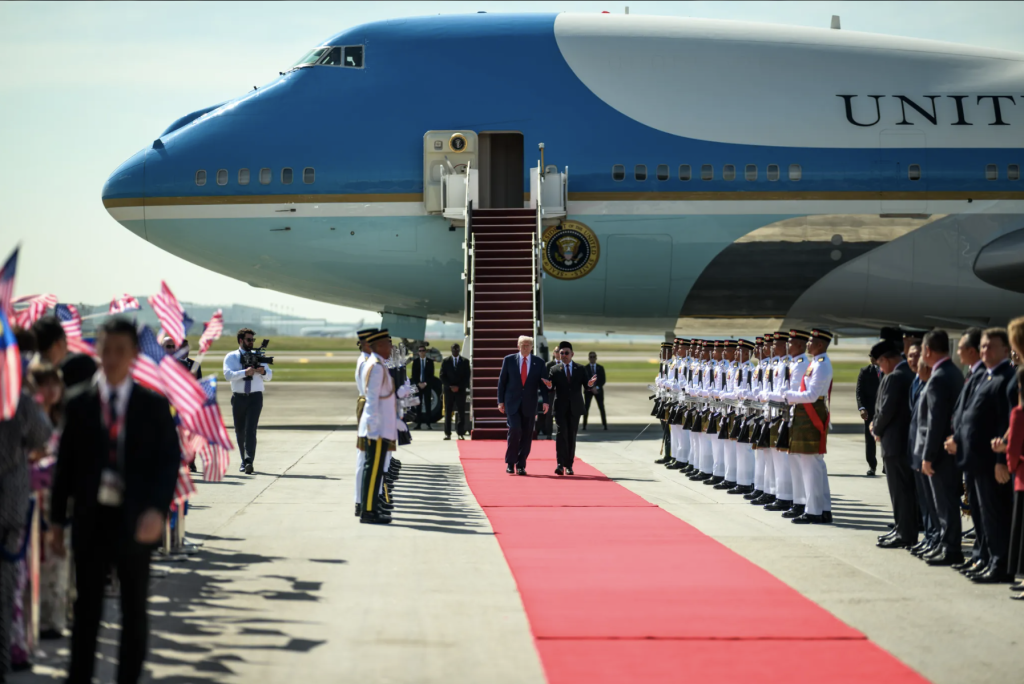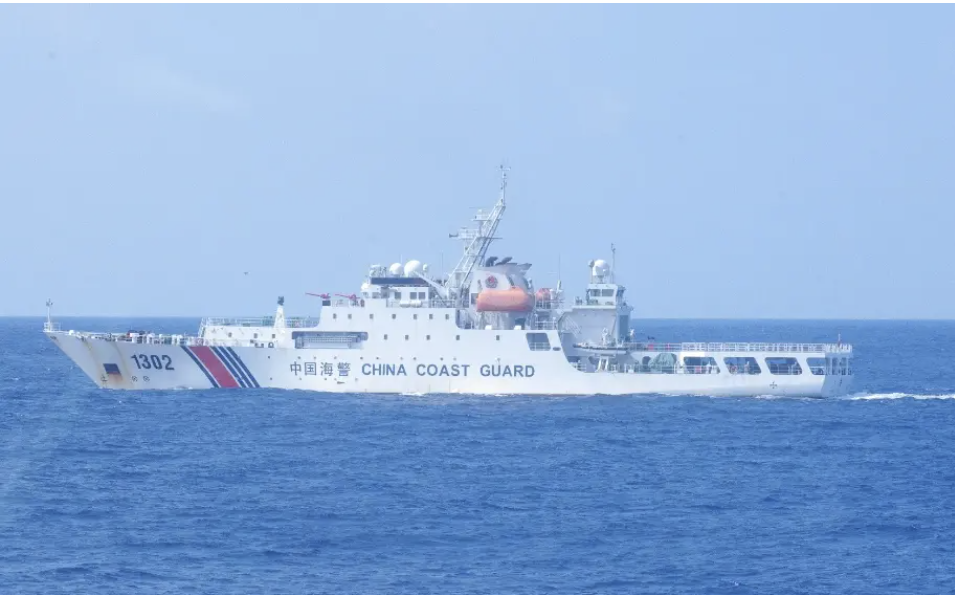Xiao Ma on Localized Bargaining in China’s Infrastructure Development
China is known for its centralized system of governance, which rules in a top-down approach, sets big targets, and frequently reaches them. After Xi secured his third term, he cemented his power further by embarking on a profound overhaul of the party-state bureaucracy and packing the Politburo Standing Committee with loyalists. Contrary to the popular-held argument that a top-down logic exclusively dominates policymaking, Dr. Ma offers a novel theory of bottom-up intergovernmental bargaining that encourages central bureaucracies to invest in local infrastructure projects and how these bargaining efforts allocate resources and influence the policy-making process, particularly with respect to China’s railway system. I spoke with Dr. Xiao Ma, an Assistant Professor of Political Science at Peking University, about his book Localized Bargaining: The Political Economy of China’s High-Speed Railway Program (Oxford University Press, 2022), on how the localized bargaining power could shape the central decision-making and how the nation’s massive bureaucracy performs.
In your book, you develop a theory behind the success of China’s railway infrastructure described by a process you call “localized bargaining.” Can you start by telling our readers what “localized bargaining” means? Why should those interested in the politics of Chinese development understand this concept?
Thank you for the question. “Localized bargaining” refers to bottom-up bargaining by local administrations to gain resources from their superiors. In the case of high-speed railways, “localized bargaining” mainly refers to bargaining efforts between the local government and the central government. There are two reasons why I use the term “localized.” First, the subject of bargaining in these interactions is very localized. Localities are seeking to bring policy benefits to their jurisdictions. They are not seeking to overdraw the entire central-local relationship in these bargaining. The second reason for using the term “localized” is because localities seldom team up in these negotiations. You may have realized that the term is a play on the more commonly used word “collective bargaining.” However, on these occasions, localities often are fierce competitors. They seldom collectively bargain with the central government.
In my book, localized bargaining is an essential framework for understanding the policy variations in the roll-out of China’s high-speed railway program. China’s high-speed railway program is one of human history’s most extensive infrastructure programs. Over the past 18 years, the central government has invested over 10 trillion RMB and built a network longer than other countries combined. So, for that alone, the framework provided some functional perspectives for us to understand this significant project. Nevertheless, as I mentioned in the book, the framework is also helpful for us to understand other policy domains, including special economic zones and large infrastructure projects other than railways, such as bridges, highways, ports, and subways.
Which factors have primarily contributed to the bargaining capacity of the local governments to influence the central government’s policymaking?
In my book, I categorized localities into two groups based on their bargaining power. The ones with more institutionalized bargaining power, which I call “cardinals” in my book, are those with more advantageous positions within the hierarchies of the state. These localities, often the leader of these localities, have concurrent appointments in the party-state system. Concurrent appointment means the leaders of localities such as counties or municipalities simultaneously hold another leadership position at one level up. For example, a municipal party secretary will simultaneously hold a leadership position at the provincial level. The concurrent appointment gave the locality more bargaining power because it allowed the local government to reach decision-makers in the central government more efficiently. Also, it allows localities to control the provincial agenda so that when the province submits proposals to the central government, it is more likely to reach a preferred decision for the locality. That is the first factor, which I call institutionalized bargaining power. However, most localities, which I call the “clerics,” do not have institutionalized bargaining power. These localities often rely on the power of the masses. Suppose the people express genuine demand for high-speed railway, for example. In that case, if they express such demand online or offline, sometimes even in the form of mass mobilization, this can put enormous pressure on locality’s superiors to concede the localities on this project.
Beijing’s government began to allow private enterprises to finance high-speed railway projects in 2014. Meanwhile, localities with limited social and cultural capital or political bargaining power have employed mass mobilization to bring infrastructure projects to their locales. Is mass mobilization an alternative to localized bargaining? To what extent have the private enterprises and the masses contributed to the bargaining power of the local governments to win the “high-speed railway battle”?
That is a great question. Mass mobilization refers to the strategy of mobilizing the masses and is integral to localized bargaining. As a result, localized bargaining differs from something commonly seen in countries like the United States. We know that in the United States, state and city governments also lobby their higher levels of government. For example, cities lobby the state, and the cities also lobby the federal government. This situation is commonly known as intergovernmental lobbying. The crucial difference between intergovernmental lobbying in countries like the United States and localized bargaining is that local governments in China also sometimes mobilize their constituents, the masses, to pressure their superiors. You mentioned that after 2014, private enterprises were allowed to finance high-speed railway projects. In this case, it is more commonly known as Private Public Partnerships or PPP.
In China, the participation of private enterprises significantly increased the bargaining power of local government because they can now take a great share of the financial responsibility for these projects. Once the central government did not need to pay a significant amount of financial resources to finance these projects, they were more likely to approve them. A few of these projects financed by private enterprises have been completed and are now in operation. Interestingly, however, only some of them are profitable. The question is whether more private enterprises will follow the example and continue to finance this infrastructure project in the future.
The book mentioned that some Beijing offices hosted large dinners, gave out gifts on holidays, or invited central officials to visit their localities to get funding for their projects from the central government. So how does this kind of institutionalized corruption, as you termed in your book, explain the nature of Chinese politics?
China is a very large and multi-layered country. China is the size of the European continent, and we know that local conditions differ significantly from one another. Moreover, we also need to remember that China has five layers of government, the central, the provincial, the municipal, the county, and the townships. So a crucial part of things within China is the information about local conditions. We all know that information on local conditions in a Southern province can differ significantly from those in the North or the West. Nevertheless, how can the central government learn this information about different localities and make informed conditions? Particularly, when you have five layers of government, information also gets diluted when it travels across hierarchies.
In my book, I argue that although localized bargaining seems to be associated with some inappropriate behavior, on the other hand, when this behavior takes place, localities are also supplying their superiors with information about their locality. When their superiors learn about localities through localized bargaining, they can also make more informed decisions regarding locality—for example, the allocation of investment in high-speed rail infrastructure. One thing we get from localized bargaining is that China is a vast country. It is a country with de facto federalist system. This argument is also the consensus in academia. Although China is a unitary system in the constitution, most scholars of China’s central-local relations agree that China is governed similarly to a federalist system in which local governments have much autonomy in their jurisdictions on social and economic development. The central government does not have enough information on what is taking place within each small local jurisdiction. That is why interactions between the local and central governments are necessary to facilitate effective and informed policymaking in Beijing. This condition is the primary reason why Beijing offices were established. Like many U.S. states, they also have D.C. offices to facilitate state and federal government interactions. The corruption phenomenon you mentioned was mostly documented before 2020. After 2012, we know there was a massive anti-corruption campaign on officials, and most of these behaviors documented in my book, such as extravagant dinners or giving out gifts to local officials, were gradually eradicated. Now I think Beijing offices primarily facilitate information flow between local and essential governments.
Nikkei Asia reported in 2022 that China is increasing infrastructure spending to bolster economic growth due to COVID-19. However, the investment has pushed up the debt infrastructure operators own. A giant real estate bubble is also caused by over-investment in the property sector. As you mentioned, let us consider information asymmetryin this context. Is localized bargaining a significant cause of this over-investment?
There are several reasons why we see an increasing amount of debt in China. For example, local governments are spending a lot on infrastructure and other areas like social welfare and paychecks for public employees. So I think the investment is one reason these debts are growing. However, in recent years, particularly after 2018, the central government began to deleverage local government debt. Localized bargaining played some role in the early stage of the debt accumulation problem but not so- much in recent years. So now, when a local government goes to the central bureaucracy seeking approval of an infrastructure project, one segment of the approval process is to look at their ability to repay the debt incurred in this project. If one of the central bureaucracies, probably the National Development and Reform Commission, if they consider local government is not in sufficient capacity to repay the debt, or if they do not think the project is profitable to generate enough revenue to pay the interest and also the principal, then the project is unlikely to be approved. So it is less of an issue in recent years, but more likely in the early stage. For example, between 2008 and 2009, a 4 trillion stimulus package contributed to a sudden surge in the government’s debts. I think that is why there is an impression of infrastructure-fueled debt.
Do you think localized bargaining played into zero-Covid policies? Why or why not?
Indeed, as we see during the three years of the coronavirus pandemic, we see first localities differ a lot in their lockdown strategies. Some places had precise, targeted, dynamic lockdowns, whereas others enforced very crude lockdowns. When people were trying to explain why we see such a big difference, some would argue that it relates to their bargaining power over superiors. The central government’s target is obvious: controlling the spread of the virus. However, localities differ because of their fiscal capacity. Some leaders also differ in their relationship with their superiors. If they have more resources and are trusted by their superiors, they can enforce zero-Covid policies more leniently. For example, they can allow people to travel with greater freedom and the less strict imposition of these restrictions.
Nevertheless, the situation differs slightly from the zero-Covid situation regarding localized bargaining. Localized bargaining concerns getting something from the central government, particularly fiscal resources. For example, local governments can get investment from their superiors if the central government approves a project. However, in the case of zero-Covid, the bargaining occurred primarily over what strategies the local government should use to curtail the spread of the virus. As you mentioned in one of the previous questions, there is information asymmetry between the central and local governments. So I think the thing goes the following way, the central government wants zero-Covid or to stop the spread of the virus. Nevertheless, it’s up to the local government to do whatever they think is most appropriate for their jurisdictions. So I think it is more likely a story of decentralizing administrative tasks rather than localized bargaining in which local government lobby for resources from their superiors.
My next question China financing infrastructure projects, such as those railway construction projects worldwide. Does localized bargaining influence the central government’s policies on these overseas investments?
I get many inquiries from readers about this. They ask if localized bargaining also played a role in shaping China’s overseas infrastructure projects. I did not address that question directly in my book, but the answer is yes. So some of my field colleagues did great work on China’s overseas infrastructure investments, such as Professor Chuyu Liu at the University of Amsterdam. They have some papers on the policy process behind China’s overseas infrastructure program. Here, we also see a process of localized bargaining. In these stories, the essential actor is companies bidding for the qualification to construct these projects. Among these bidders are state-owned enterprises and China’s domestic private enterprises, but we often see state-owned enterprises win in these bidding processes.
The primary reason state-owned enterprises always win is that they know many of the regime insiders, for example, the National Development and Reform Commission, Ministry of Commerce, and state-owned financial institutions. It is these institutions that are responsible for the approval of overseas projects. Moreover, when they need financial insurance or want financial subsidies from China’s overseas development banks, their connection with these state-owned financers also helps them gain the upper hand in the bidding process. So, with respect to China’s overseas investment, the companies seeking to qualify or gain the opportunity to undertake these projects bargain for resources. The bargaining target is still the same as in my book: those central bureaucracies.
You mentioned financial insurance, and there are also contacts with China’s overseas development banks. Does the localized bargaining process involve any implicit moral hazard that may impact the country’s financial system?
This question relates to the one you mentioned about the debt issue earlier. I think now the most considerable risk in China’s financial system is the growing size of the debt and whether the economy can generate enough growth to repay the interest, as I just mentioned. Moral hazard was mainly caused by information asymmetries between different levels of government. For example, if local governments have more information than the central government, they can hide something from their superiors and still ask for the project.
So now, as I said, particularly after 2018, when deleveraging became an essential issue for the central government, they make controlling the debts a critical policy priority and an integral element in approving these projects. In the proposal approval process, if one of the economic bureaucracies finds out that the local government cannot repay its debt or is in a poor fiscal situation, then it is unlikely that this project will be approved for the locality. So before any of these projects, local governments must demonstrate that they can repay the interest and principles associated with such projects, either because they have a steady revenue income or can leverage financial resources from other sources. For example, if they can get a transfer from some other bureaucracies in the system to finance this project. So now, the moral hazard problem is less likely to happen.
However, one area where moral hazard problems continue to occur relates to the short tenures of local Chinese officials. It usually takes three to four years before they are transferred to a different position. Here lies the problem. If an official leverages a large loan to finance a project during their tenure, they will not be responsible for repaying the debt because by the time these projects are complete, someone else will hold their position and will be stuck with repaying the debt. As a result, the central government instituted several rules after 2018 to address the debt issues that result from this. Now, officials have a lifetime responsibility system for projects whose construction began during their tenure. Suppose a later investigation finds out the project is not financially feasible. In that case, even if the official is already transferred to a different position, he will be responsible for introducing that project. So I think this kind of institution helps reduce moral hazard associated with China’s financial system.
Thank you very much for these insightful answers.








